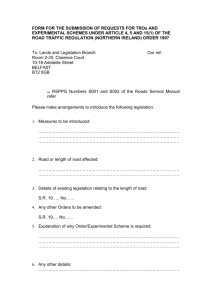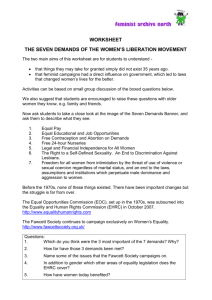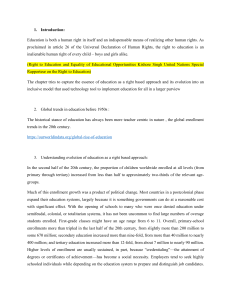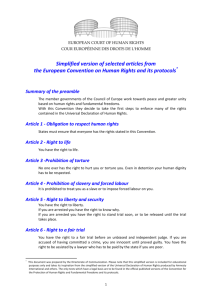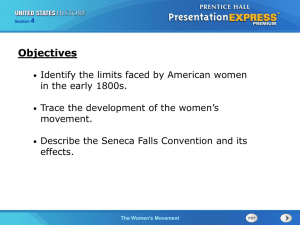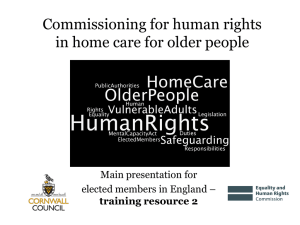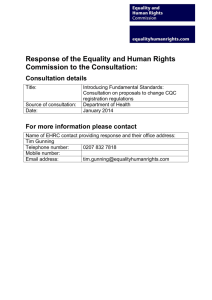Making sense of human rights
advertisement
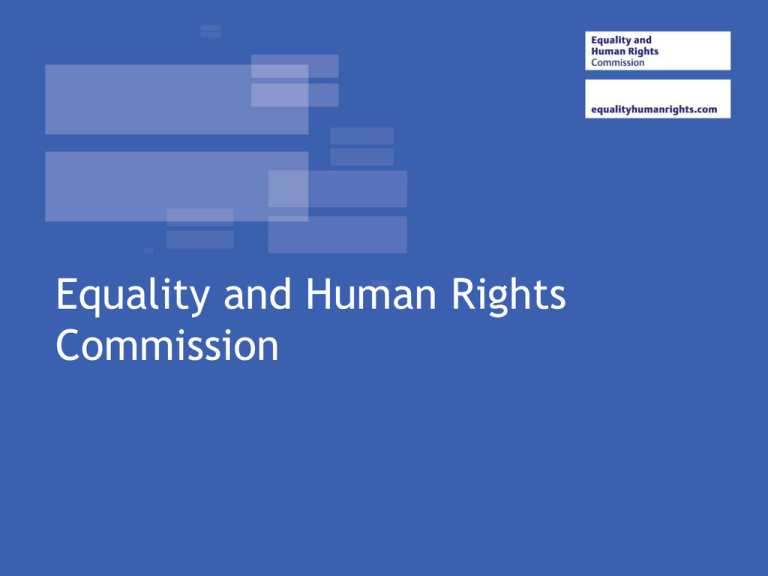
Equality and Human Rights Commission Overview of the Morning • • • • EHRC – What we do Human Rights Inquiry Making sense of Human Rights Table sessions EHRC – a snapshot • Great Britain’s first National Human Rights Institution with UN ‘A’ status • Our remit: – Encourage good practice in relation to human rights – Promote awareness, understanding & protection of human rights – Monitor the effectiveness of laws relating to human rights and compliance with equality laws 3 Nine teams for nine regions Human rights – the values Fairness Respect Equality Dignity Autonomy Equality is central to Human Rights, but not the whole story.... Human Rights – the history • Universal Declaration of Human Rights, 1948: first formal statement in modern era Think of the roots of this: limiting state control over inhabitants • European Convention on Human Rights, 1950: making rights binding People can now call on and use rights in the courts • Human Rights Act, 1998 Bringing rights home Human rights – the law Human Rights Act 1998 • Almost identical to ECHR • Can be used in courts in UK – don’t have to go Strasbourg • Legislation must be interpreted with the HRA in mind • Articles are absolute, limited or qualified Absolute v non-absolute • Absolute rights – can never be interfered with • Limited – can be engaged in certain circumstances • Qualified – can be balanced for the public good Human Rights Act 1998 Part I: The Convention Article 2: Right to life Article 3: Prohibition of torture (inhuman or degrading treatment) Article 4: Prohibition of slavery and forced labour Article 5: Right to liberty and security Article 6: Right to a fair trial Article 7: No punishment without law Article 8: Right to respect for private and family life Article 9: Freedom of thought, conscience and religion Article 10: Freedom of expression Article 11: Freedom of assembly and association Article 12: Right to marry Article 14: Prohibition of discrimination Part II, First Protocol Article 1: Protection of property Article 2: Right to education Article 3: Right to free elections What does the Human Rights Act mean for Public Authorities • It makes it unlawful for public authorities to act in a way that is incompatible with a convention right • Anyone who feels that a public authority has acted incompatibly with their Convention rights can raise this before an appropriate UK court or tribunal Taking Legal Action • Only the ‘victim’ can take a case • Action can only be taken against a public authority • Time limit is usually 12 months but depends on the type of proceeding used Our human rights work so far • Policy: Effective opposition to Government’s attempts to increase the maximum period of detention without charge for terror suspects to 42 days – Used threat of legal action • Cases: – R (RJM) v Department for Work and Pensions • Enforcement: 300 matters considered for enforcement action in our first 18 months. – 80% of matters dealt with without need for formal enforcement proceedings 12 Human Rights Inquiry • Purpose of the Inquiry – Assess the state of human rights – Consider a culture of human rights & its benefits to individuals – Focus on human rights approach in public service delivery – Define a Human Rights Approach 13 Findings: Barriers to embedding a Human Rights Approach Negative and sensationalist media coverage Lack of understanding and mainstreaming in policies and practices Lack of political leadership 14 Best practice • Health and social care • Local authority services • Education • Criminal justice • NGOs and voluntary organisations 15
